- Home
- Peter Cawdron
Reentry Page 2
Reentry Read online
Page 2
“Breathe,” I say to Su-shun. “Deep breaths.” Like he really needs to hear that, like he hasn’t thought of that himself, like he doesn’t know. Being sick in space has nothing to do with mental resolve or physique. The toughest of astronauts will bring up their breakfast. Nausea sneaks up on the best of us.
“Antiemetic?” Wen asks, floating over to join us.
“No. I’m fine.” Su-shun tries to smile. Liar. Neither Wen nor I are fine, and Su-shun looks slightly green. It usually takes about a day to recover from transit, but we’ll be back on Earth before then.
If all stays nominal.
Wen adjusts her microphone. “Houston, this is Herschel. Where are we?”
Where is a relative term in orbit. We’re racing around the planet at tens of thousands of kilometers an hour. Blink and we’ve covered eight or nine kilometers, over five miles. It’s an insane speed, and one that makes absolutely no sense on Earth. That’s like a plane flying from New York to L.A. in eight minutes.
“Herschel, perigee is 480 kilometers. Apogee is just over 700. Your orbital speed is 27,000 kph, with an orbit period of 96 minutes. Your current inclination is 37 degrees.”
Pretty meaningless stuff to a rock monkey like me. Give me a fossilized microbial mat and I’ll give you its age to the nearest hundred million years, but orbits are beyond me. I know enough to realize that a big difference between perigee and apogee isn’t all that good. Essentially, it’s like someone working a hula hoop over their hips with a wild swinging motion, really throwing themselves into it. Perigee is our closest point to Earth, while apogee is furthest away. Ideally, they should be nice and close, like 480 to 490, almost circular—a rather tame hula-hoop action. We’ll need a couple of burns to bring down our orbit before we can go through reentry.
At an hour and a half per orbit, that’s probably the best part of a day before we’re ready to land. The inclination sounds good, though. We’ll get some amazing views of Earth as we roll around most of it over the next few orbits.
If the clouds lift, it’ll even be pretty.
3
Reality
I miss Mars.
I’m really going to miss being in space.
Once my feet touch the ground, that’s the end of the road for me. Oh, no one’s said as much, but I can feel it in the strained communication with Mission Control. There’s an undertone, an unspoken understanding. I don’t know why exactly. Maybe it’s because of what happened on Mars. Maybe it’s because I’ve become a bit too surly on minor points instead of letting go.
When it comes to outer space, everyone wants to fly around like Superman, or stare out at Earth as it drifts by serenely, but it’s the little things that define space for me. Like the way that, in space, even when I’m clothed, I feel naked. That might sound kinky, but I don’t mean it that way. Natural would be a better term. I think it’s the way clothing floats around me instead of hanging on me, constantly shifting, and never really touching my body for any length of time.
Wen finishes using the bathroom. She wipes the seat and nozzle with a sanitary towelette, but nothing can remove the smell. In the movies, they make a big deal about extravagant things—like in space, no one can hear you scream. Nope. They can’t. But—I hate to break it to you—they sure as hell can smell you fart.
The toilet door is a thin plastic sheet with accordion folds that’s about as sturdy as a picket fence in a hurricane. I clip the door closed behind me, slip off my pants, secure a Velcro strap around my waist, fix the suction tube over my groin, align my ass with the bowl, and “prepare for evac,” as we like to say.
After nine months of blockage, it’s not much fun. We have laxatives, of course, but by the time they kick in, my joy will have passed anyway. Besides, if there’s one thing worse than being constipated in space, it’s having the runs. This is another omission from the travel brochure.
Ah, the glamorous life of an astronaut.
Still, I’ll miss all of this.
Poor Su-shun is last to use the bathroom. We exchange polite smiles as we swap places, but the smell betrays my sincere sentiments. He’s been kind, letting us women go first. Who says chivalry is dead?
The Herschel is an interplanetary craft designed for transit between Earth and Mars. It’s reusable and will be pushed into a higher, “parking” orbit once we depart, awaiting cleaning and refueling, never landing anywhere. It’s a true shuttle, albeit without wings. Rather than launching from Earth, resupply will probably come from the fuel mining depot at Aitken Base, near the Lunar south pole. This would be an easy journey for the astronauts stationed there. I’m sure they’ll welcome the chance to get away from “The Rock” for a while.
Wen points at the tiny reinforced-glass window. “NASA has an Orion keeping station at five hundred meters.”
“Oh, good.” I may sound a little flat, but only because that was always the plan. If the Orion wasn’t there to ferry us home, I’d be worried and a helluva lot more animated.
The Herschel is little more than a narrow tube, as that’s all that could be launched from Earth. Beyond that, it has no aerodynamics. Both the leading and trailing edges are blunt, making it a cylinder. From the outside, it looks ungainly, but internally, it maximizes what space there is. The only way of telling which end is which is by looking for the tiny bell engine.
The Herschel appears unfinished, as though someone forgot the top half of a rocket, but it’s perfectly suited for sailing between planets as there’s no need for aerodynamics. Like most components in space, it’s an example of refining and reusing an existing design, being based on the modules installed on the International Space Station. Originally, the Herschel launched with an Orion capsule sitting on top, but after the engineers on that maiden flight commissioned the craft, they returned to Earth in the Orion, leaving the Herschel in orbit. It’s been operational continuously for over a decade now, ferrying astronauts back and forth to Mars.
The Herschel is sparse but practical; it’ll never grace the pages of Time magazine—that’s reserved for sexy spacecraft with big descent engines and large, spindly legs. The Orion, by comparison, is dignified, almost elegant. It’s the successor of the Apollo Command Module from decades past. Technically, it’s a gumdrop with a weighted bias that keeps it upright during reentry. It looks like a real spaceship, while the Herschel looks like a pretender.
Su-shun drifts up to a control panel. There are only a handful of windows, as there’s not much to see between here and Mars. He positions himself in front of a console and slips on a headset.
“What’s the plan, Houston?”
“No rush, Herschel. We’re happy to wait if you need more time.”
Translation: they saw him puking.
“No, I’m good.” Su-shun ignores them, running through a digital checklist.
Wen and I drift in body-neutral positions reminiscent of sitting in a jacuzzi—minus all the wonderful warm water and bubbling jets. Su-shun looks as though he’s lying prone on the floor, but he’s in midair with his legs extended behind him. “We’re ready to go home.”
He lines up the crosshairs on the docking camera. In the distance, a lone star lights up the darkness on the computer screen. It takes me a moment to realize that’s us. He’s looking at the view from the Orion, having taken remote control of the vessel. The docking procedure is automated, but there’s always the possibility of a contingency arising, and Su-shun is a certified pilot, so he’s got override control if needed.
“Initiating approach.” Su-shun activates the docking routine. “Coming in to 150.” Slowly, the Herschel grows on the screen. Thick dotted lines mark crosshairs cutting over the image, clearly indicating the focal point. There are a bunch of metrics on the screen, including closure rates, distance, pitch, roll, and yaw. Docking is a slow, methodical process. Nothing is rushed.
Su-shun holds on to a pair of chrome handles set on either side of the two joysticks that control the translation, or drift, of the Orion, along with the r
otation of the craft. I don’t think he’s actually doing anything as the computer program has an unblemished record, but nothing is taken for granted these days. Su-shun is cautious about what is an entirely normal procedure.
“Docking probe extended. Internal pressure confirmed.” He’s not telling Houston anything they don’t already know from monitoring the craft remotely, but he’s making sure everyone’s in agreement. Internal pressure within the Orion is a good thing, or opening the hatch could be disastrous.
“Copy that.”
There’s nothing for Wen and me to do other than watch. I peer out the window. The Orion inches closer. Tiny bursts of gas are visible as the Orion adjusts its position. They puff out of small vents on the side of the craft like steam from a clothes iron.
“Alignment is good.”
Su-shun has his hands poised, ready to take control, but he won’t be needed. The crosshairs drift over the hull of the Herschel, resting on the hatch. As the Orion closes in, they align with the center of the capture port.
“Contact,” Su-shun says. I’m holding on to a rail, so I feel a slight shudder as he follows up with the words “And capture.” Inches away, just beyond the hatch, metallic hooks turn within the lock, joining the two vessels together.
Wen drifts over by the hatch. She begins running through a digital checklist—verifying the seal between the two spacecraft, measuring pressure differentials, etc.—and methodically ticks off each point. Now that all eight hooks have locked, we’re fine, but NASA is anything but hasty, especially when dealing with two astronauts from CNSA, the Chinese space agency. The Chinese wanted to send up their own craft, but there was no need for two taxis.
Wen takes almost ten minutes reviewing the details before saying, “We’re all clear.”
Su-shun unhooks a cargo net and directs a box through the craft. I smile, helping out, but I feel a sense of trepidation. This is the end of the road. From here, nothing will ever be the same, and yet here we are, going through the motions of unloading the Herschel as though we were unpacking the family car after a picnic.
Over the radio, Houston announces, “And . . . we have the hatch opening at 4:15 Central Time. Herschel, you are clear to transfer to the Orion, designated MR-131.”
Okay, the cameras are rolling. Enough of the gloomy thoughts. I smile as I somersault, swimming through the Herschel to grab samples of my scientific work on Mars.
Wen squeezes past. Even though the Herschel is narrow, zero gee affords a surprising amount of space. I carry a box of rock samples with me to the Orion.
“I’ll get the suits,” I say, using my hands to guide myself through the docking collar.
Three empty spacesuits sit strapped in their seats. It’s as though the Orion is haunted by ghosts wearing day-glow orange. It’s slightly unnerving working with big, stiff, empty spacesuits, but they’ve been ferried up here for our return. Even though they’re empty, they flex and bend as though they’re inhabited. I push two of them through the lock, handling them like mannequins. I keep mine in the Orion to give Wen and Su-shun a bit more room to suit up inside the Herschel.
Spacesuits come in a variety of forms. The hard-core spacewalk kind are actually quite rare and horribly bulky, taking hours and the assistance of several people to put on. Most suits are designed for transit and intended as a contingency to protect us against any sudden loss of cabin pressure. They’ll keep us warm and oxygenated, and that’s about all that’s needed. In a pinch, these suits could be used in a spacewalk, but they don’t offer much thermal protection or additional layers to guard against snagging on metal. Also, they lack an external air supply, being dependent on an umbilical cord for breathable air and electrical power.
I slip into the pants first, fix my boots, and then work with the upper torso. The Orion is the SUV of space travel—considerably bigger than ships like Soyuz or Apollo, but it’s still no RV. Constant touches on the hull keep me stable as I work my way into my suit. Helmet on. Faceplate open. Gloves locked. I’m set.
“Good to go?” Wen asks, sailing through the docking collar. She’s cheerful. Her face is flushed with color. In space, physical activity is a good thing. All too often, we’re simply dragging our bodies around like a beached walrus, working hand over hand and rarely using our legs. Getting suited up is the closest any of us have gotten to cardio since we left Mars, using all our muscle groups at once.
“Absolutely.” I try to sound excited. As much as I feel some trepidation on returning to Earth, there’s also a sense of relief. I’m going home—to my real home. I’ll see Mom again. Eat French fries. Chocolate. Ice cream. Drink beer. Wine. Those thoughts bring a genuine smile to my face.
Wen straps herself into the commander’s seat in the center of the Orion. Su-shun guides another weightless box through the spacecraft. I reach out and take it from him as he swims through the air.
Su-shun sends five more boxes through, and I stow each one. I’ll miss the joy of working with awkward things in weightlessness. On Earth, this would be exacting work. We’re transporting over eight hundred pounds of rock samples, including core drill extracts stored in specially sealed tubes, insulated and actively cooled to −140°F to ensure the dry ice mixed in with the rock and soil remains frozen. These aren’t just samples of Martian bedrock; they contain traces of the Martian atmosphere from an estimated two billion years ago, so they’ll be thawed under carefully controlled conditions back on Earth. It’s no stretch to say we’re handling trillions of dollars’ worth of samples in just a few minutes. Fort Knox has nothing on this tiny tin can floating in space.
Su-shun closes the hatch and takes the pilot’s seat, while I sit on the far side, looking out a window at a radar dish on the Herschel.
“This is the Orion MR-131, initiating separation from the Herschel.”
“Copy that, MR-131. You are clear for separation.”
Automated machinery whirs and clicks. A soft thud marks our release. Su-shun works the attitude thrusters with hand controls, easing us away from the Herschel, taking us straight back. I lose sight of the Herschel after about twenty feet. There are no stars. There’s nothing but pitch-black darkness outside my window.
As my eyes adjust to the changing light levels, pinpricks of white appear, slowly increasing in intensity until it is as though someone spilled salt on black velvet.
Dust lanes hide the brilliance of the Milky Way, giving a sense of perspective to the sheer size of the galaxy. There are thousands of tiny stars in the foreground, floating above the inky black clouds, with hundreds of thousands of intense blue stars glowing beyond them. I’m staring into eternity. Within a few minutes, the stars are shining like diamonds.
The Orion turns and rotates slightly as the craft aligns for an orbital burn.
“Five hundred meters and holding.” Su-shun is all business. His gloved fingers reach for the control panel, punching decisively. The Herschel comes back into view, glistening like a star as the sunlight reflects off its silvery hull.
“MR-131, you are coming through clear. Telemetry is good. You have just over twenty-five minutes until your first deorbit burn. Three burns and you’re coming home. We’ve got clear skies south of Hawaii and a balmy ninety degrees. The USS Anchorage is on location and standing by.”
“Copy that, Houston.”
From the warmth and safety of Mission Control, a friendly voice replies, “We’ll see the three of you soon.”
Three?
There are three living, breathing humans, but depending on how I count the souls onboard, I make either four or five of us—if not more.
As for the others?
Damn, even I’m not sure what to make of them.
4
Descent
We begin our descent to Earth and it feels more like we’re descending into hell.
Nothing happens quickly in space. Nothing except launches and landings. Everything else is mundane, bordering on boring, and yet as we float in our seats, held in place only by a seat bel
t without any sense of weight, I feel as though I’m going to be sick. I can’t deny it anymore. As much as I want to imagine otherwise, we’ve been called back to Earth to give an account of the war on Mars.
If you’d asked me before this mission if I believed in artificial intelligence, I would have given you a polite but theoretical answer, one that was thoughtful but sterile. Now I struggle to draw a distinction between us and them.
Given they tried to wipe us out, my perspective is a little unsettling even for me. Some days, I’m more convinced than others, which worries me. I fear for my own sanity. After defeating the malicious artificial intelligence on Mars, we all thought that was the end. We’d won.
I’m not sure why Su-shun salvaged the hard drives, but he took them offline, wanting to understand what drove the A.I. to attack us. What he found, though, was disturbing. Among those killed—murdered—was my boyfriend Jianyu. Yet somehow, he was still alive inside the machine. We had all seen the cables leading from Jianyu’s fractured skull into the network port during the fight with the A.I., but we never imagined why. Then Jai began talking to me from a computer screen. Naturally, we suspected it might be fake—a ruse. But why fake something like that? One thing I know is that in dealing with an artificial intelligence, we’re most certainly not dealing with something that is in any way human. We might as well be conversing with an extraterrestrial, and yet deep within those drives is someone human—the man I loved.
That scares me.
Neither Su-shun nor Wen buy the lie. As for me . . . I’m a fool. The box strapped in below my boots is a coffin. There are no bones, just a bunch of damaged computer flash drives that I dare to imagine somehow contain life.
Jai is nothing more than an electronic imprint now, but, deep down, aren’t we all? At first, that idea seemed crazy to me, but what is consciousness other than a sustained electrical reaction running through neurons? Whether it’s in silicon or the mushy gray matter within the skull, does it really matter where it resides? Why should biological entities hold a monopoly on conscious intelligence?

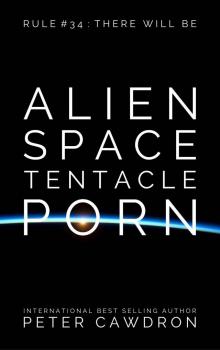 Alien Space Tentacle Porn
Alien Space Tentacle Porn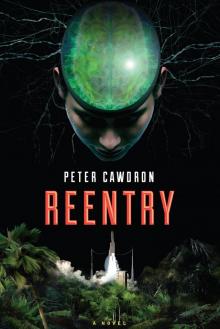 Reentry
Reentry Déjà Vu (First Contact)
Déjà Vu (First Contact) Wherever Seeds May Fall (First Contact)
Wherever Seeds May Fall (First Contact) But The Stars
But The Stars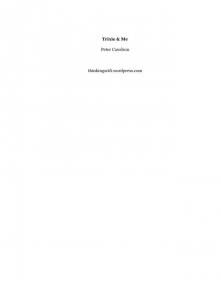 Trixie & Me
Trixie & Me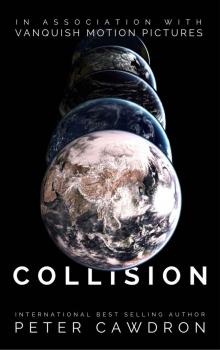 Collision
Collision Jury Duty (First Contact)
Jury Duty (First Contact)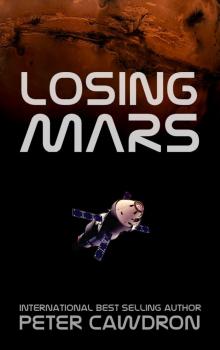 Losing Mars
Losing Mars We Are Legion (van Helsing Diaries Book 2)
We Are Legion (van Helsing Diaries Book 2) Van Helsing's Diaries (Books 1-3): Nosferatu
Van Helsing's Diaries (Books 1-3): Nosferatu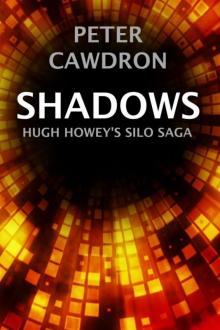 Shadows
Shadows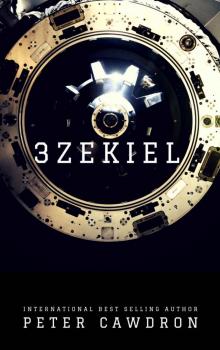 3zekiel (First Contact)
3zekiel (First Contact) Vampire (van Helsing Diaries Book 1)
Vampire (van Helsing Diaries Book 1) Xenophobia
Xenophobia All Our Tomorrows
All Our Tomorrows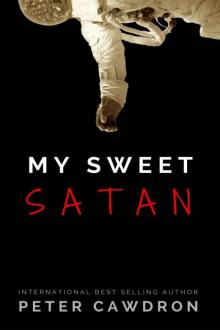 My Sweet Satan
My Sweet Satan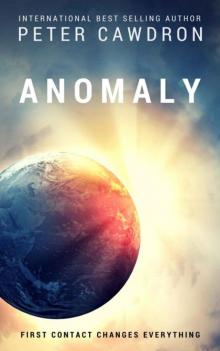 Anomaly
Anomaly Monsters
Monsters